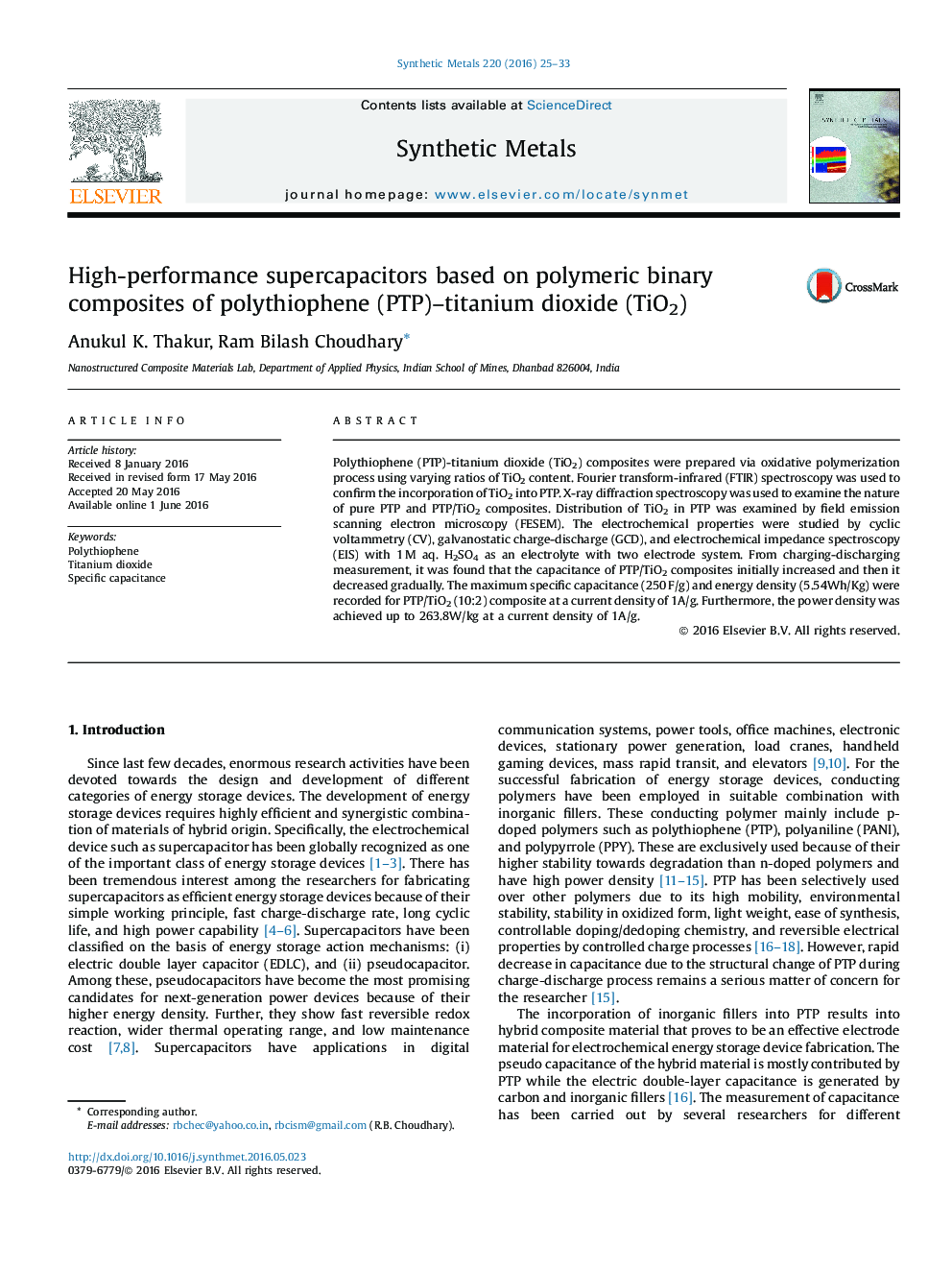| Article ID | Journal | Published Year | Pages | File Type |
|---|---|---|---|---|
| 1440062 | Synthetic Metals | 2016 | 9 Pages |
•High value of specific capacitance occurred due to sequential addition of TiO2.•Specific capacitance of 80 F/g resulted for PTP at current density of 1A/g.•Maximum specific capacitance (250 F/g) was obtained for PTP-TiO2 (10:2) composite.•An optical band gap of 2.2 eV was obtained for PTP-TiO2 (10:2) composite.•An optimum dose of TiO2 imparted better thermal stability to PTP-TiO2 composite.
Polythiophene (PTP)-titanium dioxide (TiO2) composites were prepared via oxidative polymerization process using varying ratios of TiO2 content. Fourier transform-infrared (FTIR) spectroscopy was used to confirm the incorporation of TiO2 into PTP. X-ray diffraction spectroscopy was used to examine the nature of pure PTP and PTP/TiO2 composites. Distribution of TiO2 in PTP was examined by field emission scanning electron microscopy (FESEM). The electrochemical properties were studied by cyclic voltammetry (CV), galvanostatic charge-discharge (GCD), and electrochemical impedance spectroscopy (EIS) with 1 M aq. H2SO4 as an electrolyte with two electrode system. From charging-discharging measurement, it was found that the capacitance of PTP/TiO2 composites initially increased and then it decreased gradually. The maximum specific capacitance (250 F/g) and energy density (5.54Wh/Kg) were recorded for PTP/TiO2 (10:2) composite at a current density of 1A/g. Furthermore, the power density was achieved up to 263.8W/kg at a current density of 1A/g.
